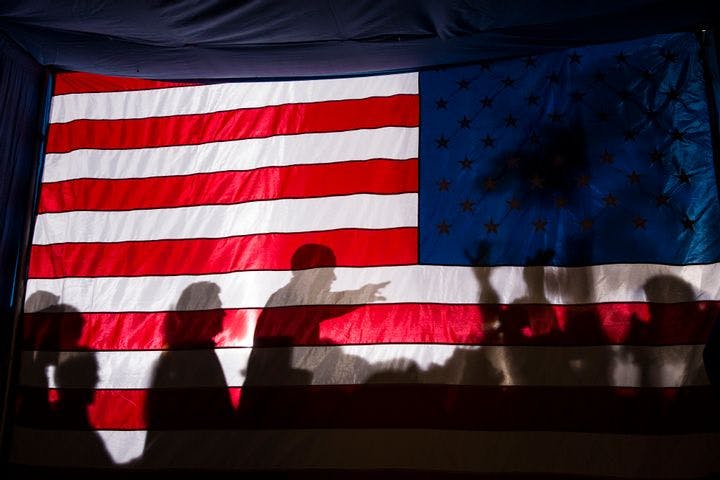Spring 2013
There’s no 50/50 political split in America. It’s more like 35/25/40.
– The Wilson Quarterly
A growing number of Americans don’t identify with either political party.
Pity the state of American politics. Half the voters pull the country in one direction, and the other half stubbornly yank it the opposite way. Everybody seems to be screaming, not so much at each other as past each other. The United States is divided down the middle, the pundits say.
It isn’t. In terms of party affiliation, ideology, and even positions on particular hot-button issues, the American electorate has hardly changed at all in a generation. Today, about a quarter of Americans say they are Republicans; a similar proportion said the same 30 years ago. Some 35 percent of Americans identify as Democrats, the same as before. Nearly 40 percent of Americans don’t even identify with a political party, writes Morris P. Fiorina, a political scientist at Stanford and a senior fellow at the Hoover Institution, in The American Interest.
What has changed is the political class — party activists, donors, and convention delegates. The rise of partisan media and the proliferation of ideological interest groups have also turned up the temperature.
Meanwhile, demographic and political sorting has left the parties “more homogenous than they were a generation ago,” Fiorina says. Liberals, for example, were once found in both parties. Now virtually all are Democrats, while conservatives have moved to the GOP. Nonetheless, there’s still some diversity within the parties. For example, nearly 40 percent of “strong Republicans” polled in a 2008 survey wavered from a strictly pro-life stance. And more than a third of “strong Democrats” took views on abortion close to those associated with the Grand Old Party. Polls find similar results when it comes to gun control and other issues.
The problem is that “the most active and involved members come from the most extreme reaches of each party.” During last year’s presidential primaries, for example, the conservative former senator Rick Santorum emerged for a time as a top Republican contender after victories in Minnesota, Colorado, and Missouri. The turnout in those contests, however, averaged less than four percent.
Our era of what Fiorina calls “almost unprecedented electoral instability” is evidence that “the middle of the American electorate ... no longer has a home in either party.” In 2004, Americans reelected a Republican president and solidified GOP control of both chambers of Congress. In 2006, they gave the Senate and House back to Democrats. In 2008, Barack Obama roared into the White House and commanded control of Congress. But in 2010, voters handed Democrats catastrophic losses, costing them control of the House.
The last time party control seesawed so consistently was during the Gilded Age, over five elections from 1886 to 1894. Fiorina says the similarities between the two eras are striking. In the late 19th century, partisan rancor prevailed, and the parties themselves were neatly sorted ideologically. Americans worried about the yawning gap between robber barons and tenement dwellers — much as they fret today about disparities between “one-percenters” and the rest of the country. Then, the economy was transitioning from agriculture to industry; today it’s in flux again.
The political turmoil of the Gilded Age ended with the formation of lasting new electoral coalitions. But Fiorina says that these “are arguably more dangerous times,” shadowed by the specters of terrorism, rising debt, and looming inflation. “The United States could afford 20 years of political chaos in the late 19th century before a new majority emerged,” Fiorina concludes. “It remains to be seen whether we can do the same today.”
THE SOURCE: “America’s Missing Moderates” by Morris P. Fiorina. The American Interest, March/April 2013.
Photo courtesy of Flickr/Pete Souza
